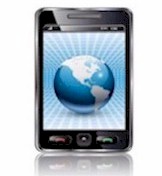DSC Tech Library
CTI Computer Telephony Integration
 This section of our technical library presents information and documentation relating to Computer Telephony and Computer Telephony Integration software and products.
Computer Telephony Integration CTI software is a rich set of phone software library routines that enable application programs to control your phone system.
This comprehensive CTI software lets you increase employee productivity, enhance customer service and reduce costs by combining the capabilities of our PACER phone system with the custom functionality of your Windows, Unix or Web applications.
Data collected by your phone ACD (Automatic Call Distribution) or IVR (Interactive Voice Response) systems can be passed to your existing PC, Unix or Web applications through our phone software.
The PACER predictive dialer can automatically call your customers and pass only connected calls to your agents. With our computer telephony software, your telephone and computer work together to provide cost-saving benefits.
This section of our technical library presents information and documentation relating to Computer Telephony and Computer Telephony Integration software and products.
Computer Telephony Integration CTI software is a rich set of phone software library routines that enable application programs to control your phone system.
This comprehensive CTI software lets you increase employee productivity, enhance customer service and reduce costs by combining the capabilities of our PACER phone system with the custom functionality of your Windows, Unix or Web applications.
Data collected by your phone ACD (Automatic Call Distribution) or IVR (Interactive Voice Response) systems can be passed to your existing PC, Unix or Web applications through our phone software.
The PACER predictive dialer can automatically call your customers and pass only connected calls to your agents. With our computer telephony software, your telephone and computer work together to provide cost-saving benefits.
CTI Glossary (R-S)
[0-A
] [ B-C ] [ D-H
] [ I-M ] [ N-Q
] [ R-S ] [ T-Z
]
RIP (Routing Information
Protocol):
A protocol defined by
RFC 1058
that specifies how
routers exchange
routing table information. With RIP, routers
periodically exchange entire tables. Because this is
inefficient, RIP is gradually being replaced by a newer
protocol called
Open Shortest Path First (OSPF).
RNA (Ring No Answer): A telephone system with insufficient
voice mail ports to extensions. E.g. 4 VM ports to 36
extensions. The result being if more than 4 employees
attempt to check, receive and have Auto Attendant
operate VM, the system will be down and the customer
will get a Ring No Answer or a busy signal.
Router:
Developed by Cisco. Are the central switching offices
of the Internet. Used by LAN, MAN, WANS’.
SDMF (Single Data Message
Format): For caller ID the date, time & calling
#. MDMF is the same except adds the callers name.
SLA
(Service Level Agreement):
Is a contract between an
ASP and
the end user which stipulates and commits the ASP to a
required level of service. An SLA should contain a
specified level of service, support options, enforcement
or penalty provisions for services not provided, a
guaranteed level of system performance as relates to
downtime or uptime, a specified level of customer
support and what software or hardware will be provided
and for what fee.
SMDR (Station Message
Detail Recording):
Another name for telephone call accounting.
SMTP/POP3 (Simple Mail
Transfer Protocol/Post Office Protocol3): Sending email messages via the Internet between
servers. E.g., from a SMTP to POP3 server.
SVC (Switched Virtual
Circuit): A temporary
virtual circuit
that is set up and used only as long as data is being
transmitted. Once the communication between the two
hosts is
complete, the SVC disappears. In contrast, a
permanent virtual circuit (PVC)
remains available at all times.
SVGA (Super Video Graphics Array):
1024 x 768 pixels = 16.7 million simultaneous colors for
“true color”!
|


 This section of our technical library presents information and documentation relating to Computer Telephony and Computer Telephony Integration software and products.
Computer Telephony Integration CTI software is a rich set of phone software library routines that enable application programs to control your phone system.
This comprehensive CTI software lets you increase employee productivity, enhance customer service and reduce costs by combining the capabilities of our PACER phone system with the custom functionality of your Windows, Unix or Web applications.
Data collected by your phone ACD (Automatic Call Distribution) or IVR (Interactive Voice Response) systems can be passed to your existing PC, Unix or Web applications through our phone software.
The PACER predictive dialer can automatically call your customers and pass only connected calls to your agents. With our computer telephony software, your telephone and computer work together to provide cost-saving benefits.
This section of our technical library presents information and documentation relating to Computer Telephony and Computer Telephony Integration software and products.
Computer Telephony Integration CTI software is a rich set of phone software library routines that enable application programs to control your phone system.
This comprehensive CTI software lets you increase employee productivity, enhance customer service and reduce costs by combining the capabilities of our PACER phone system with the custom functionality of your Windows, Unix or Web applications.
Data collected by your phone ACD (Automatic Call Distribution) or IVR (Interactive Voice Response) systems can be passed to your existing PC, Unix or Web applications through our phone software.
The PACER predictive dialer can automatically call your customers and pass only connected calls to your agents. With our computer telephony software, your telephone and computer work together to provide cost-saving benefits.